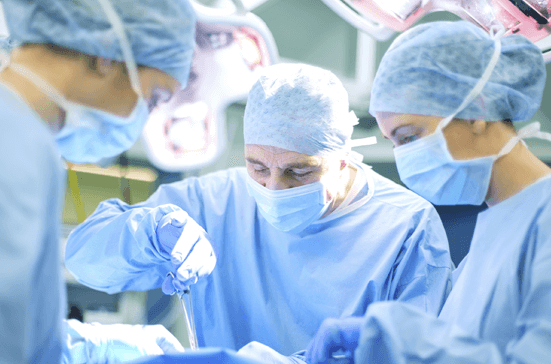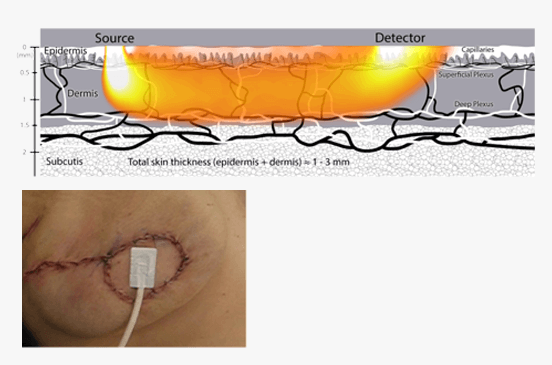ViOptix has pioneered the development of products to measure % StO2 in real time.
ViOptix products are helpful in assessing critical tissue perfusion during various types of procedures.

ViOptix’s tissue oximetry technology platform is a patent-protected, non-invasive method of assessing subcutaneous tissues using near-infrared spectroscopy (NIRS) to measure photon scattering and absorption.
In human tissue, near-infrared light is highly scattered and minimally absorbed. The tissue’s heterogeneous structure causes light to scatter. But some structures within the tissue, called chromophores, absorb light. Hemoglobin is one of the principal chromophores in tissue.
Evaluating the reflected light gives clinical information about the biochemical status of these chromophores. More specifically, ViOptix technology uses reflected light to determine the ratio of oxyhemoglobin (HgbO2) and deoxyhemoglobin (Hgb) to permit real-time measurement of StO2 within the
selected tissue.

T.Ox sensor non-invasively placed on a breast reconstructive skin paddle.
Risal Djohan, MD